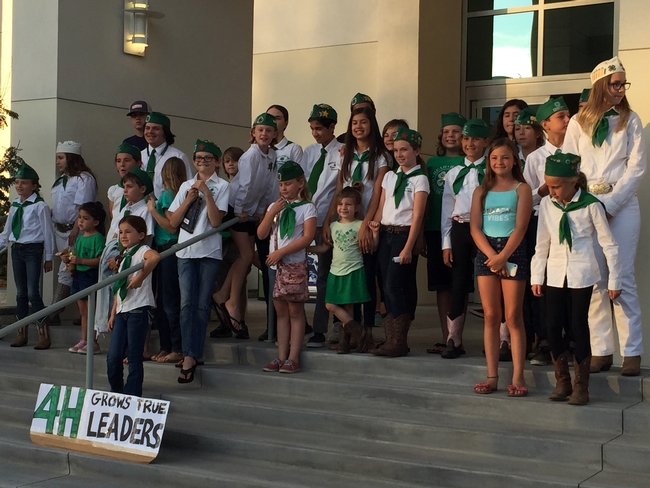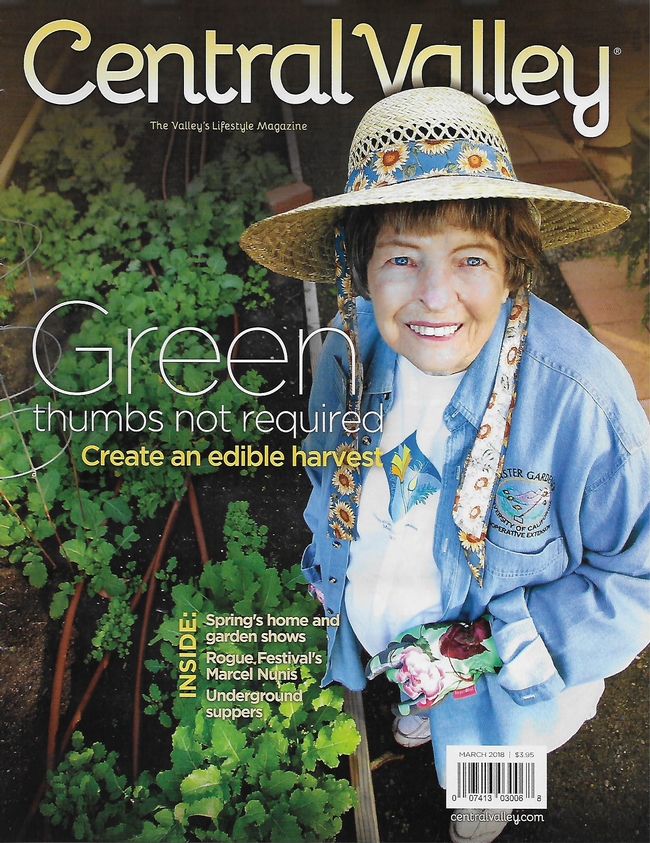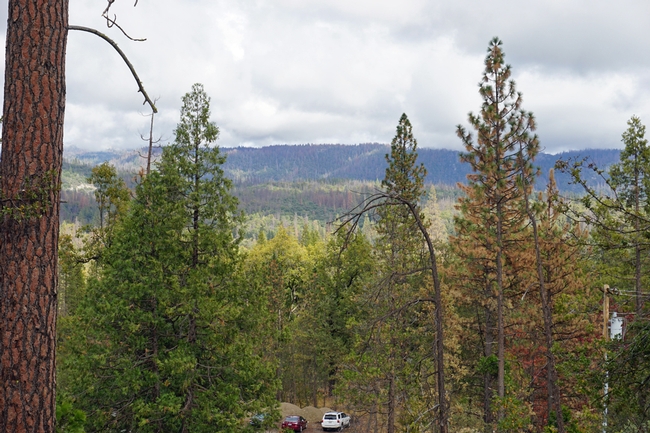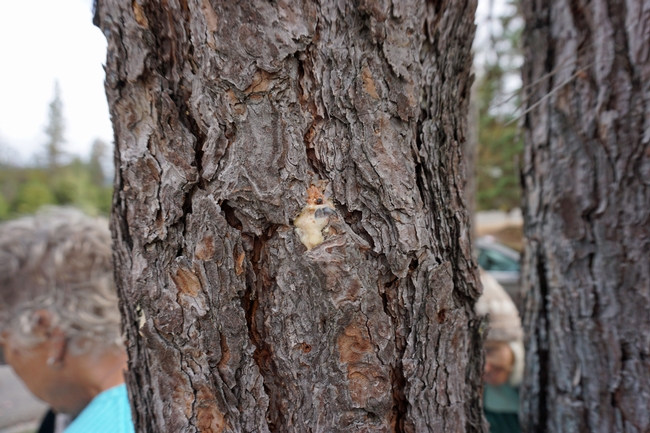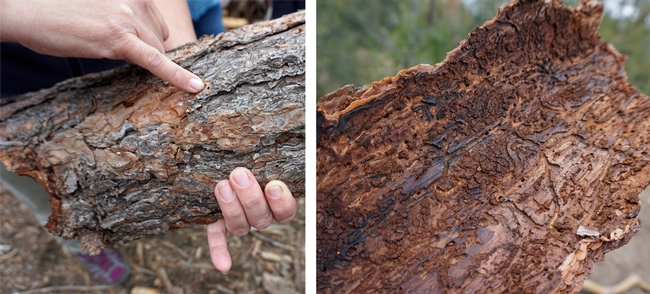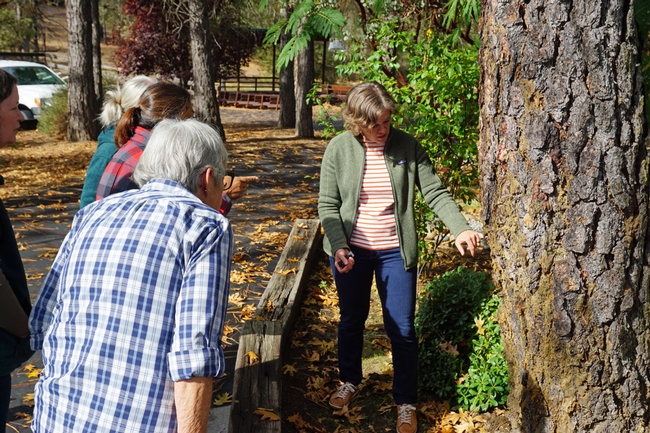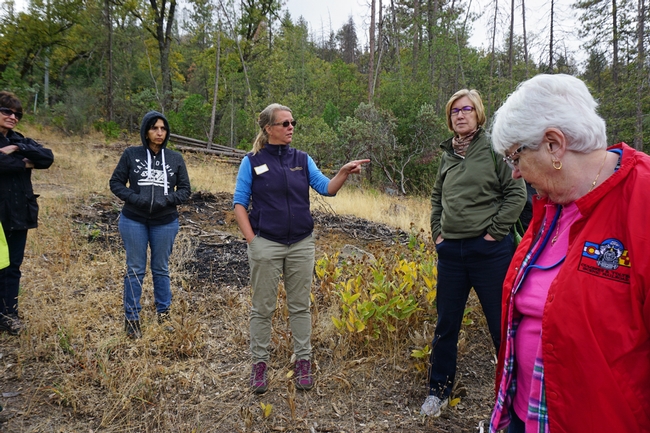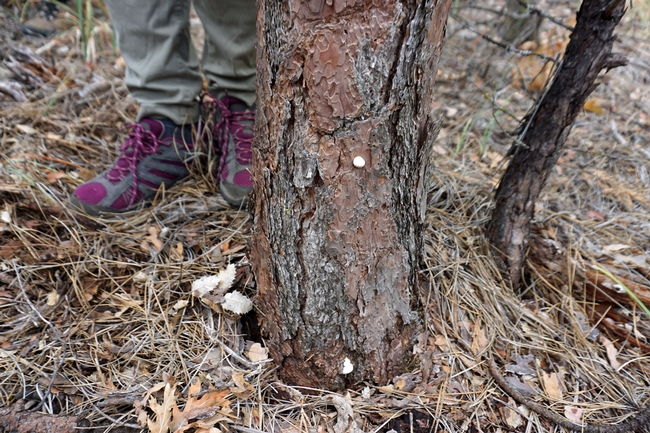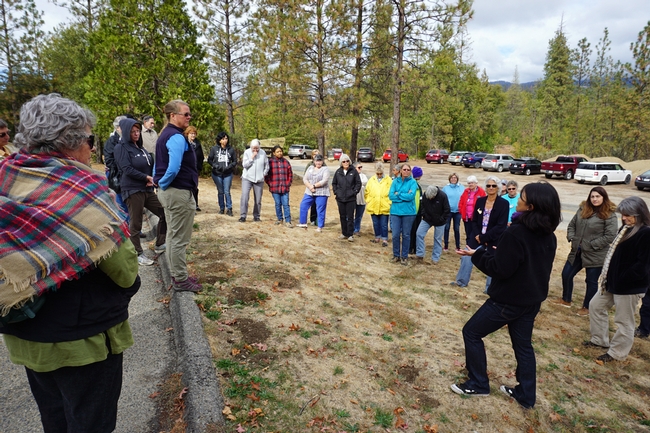Posts Tagged: Master Gardeners
Riverside supervisors vote to restore UCCE funding
After more than 100 4-H members, UC Master Gardeners and others attended a Riverside Board of Supervisors' meeting in support of UC Cooperative Extension June 10, the panel voted 5-0 to restore UCCE's funding, reported Jeff Horseman and Matt Kristoffersen in the Riverside Press Enterprise.
The vote reversed an earlier decision to cut UCCE funding as part of a larger plan to deal with reduced county tax receipts. If the funding had not been restored, services including 4-H, nutrition education and agricultural programs would have been effected, said Eta Takele, UCCE director in Riverside County.
UC Cooperative Extension, a key part of UC Agriculture and Natural Resources, serves all California counties. Academic advisors work with farmers to implement more-efficient growing methods, solve pest management problems and develop smart water-use strategies. Natural resources advisors conduct wildfire education and research natural resources conservation. Nutrition educators promote nutritious eating habits and exercise for better health. California 4-H Youth Development Program engages youth to become leaders. Thousands of volunteers extend UCCE's through the Master Gardener, Master Food Preserver, California Naturalist, and the California 4-H Youth Development Programs.
During the June 10 meeting, the supervisors heard from Riverside 4-H members who have been aided by their involvement in the program.
4-H member Bethany Campbell told the supervisors 4-H helped her overcome shyness and gain confidence.
“4-H helped me rise above fear and insecurity to become a leader," Campbell said.
A Blythe 4-H member, Samantha Teater, 17, said, 4-H "definitely saved me from getting into trouble."
UC ANR associate vice president Wendy Powers attended the supervisors' meeting.
"Those who offered public comment provided heartfelt testimony about the impact of our programs and how they, personally, have benefited and how the county has benefited," Powers wrote in her blog. "The work's not over. We need to continue to engage those who don't know us but make decisions that impact us. We need to continue to engage those who do know us, and brainstorm how to do better – reach more people, have a greater impact."
The article said Riverside County officials would work with UC Cooperative Extension to save money by moving its offices from leased office space to county-owned space.
It's Pollinator Discovery Day Sunday at UC Davis
Meet the pollinators, And meet the UC Davis researchers, UC Master Gardeners, students and community members who study them or promote them. That's...
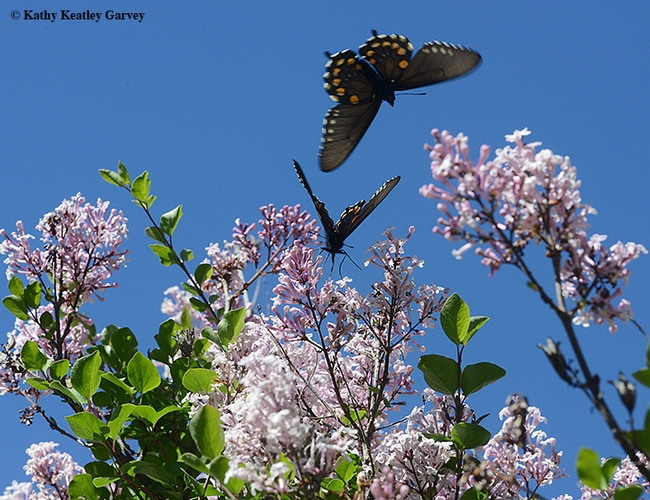
Pipevine swallowtails at the UC Davis Arboretum. (Photo by Kathy Keatley Garvey)
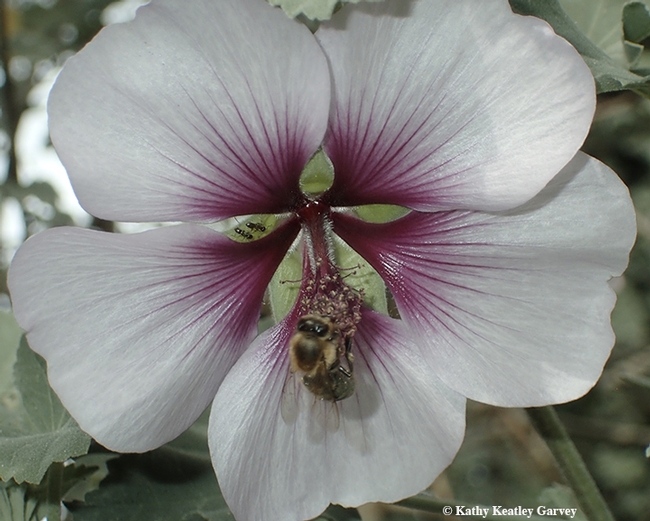
A honey bee foraging in mallow at the UC Davis Arboretum. (Photo by Kathy Keatley Garvey)
UC Master Gardeners among 'most valuable' gardening resources
UC Master Gardeners of Fresno County are celebrated in the March issue of Central Valley magazine. The issue is focused on gardening, ranging from growing one tomato plant on an apartment balcony to tending numerous raised beds that produce a bounty of produce for the family table.
"Locally, there are plenty of resources for the budding home gardener," wrote reporter Cyndee Fontana-Ott. "One of the most valuable is the UCCE Master Gardeners of Fresno County."
On the cover of the magazine is UC Master Gardener Rose Pipkin. Master Gardeners Michael Harman and Charlie Hindles are pictured inside along with beauty shots of the Garden of the Sun, the Master Gardeners' one-acre ornamental and food production demonstration garden at the Fresno Discovery Center, 1750 N. Winery, Fresno.
The magazine includes a two-page spread on two upcoming UC Master Gardeners of Fresno County activities: A series of garden seminars at the Fresno Home & Garden Show at the Fresno Fairgrounds March 2-4, and the Master Gardeners Spring Garden Tour April 21.
In her introduction to the gardening issue of Central Valley magazine, editor Carey Norton writes about her personal experience on the Master Gardeners Spring Garden Tour.
"What I love is that within every showcased garden are docents who can answer questions about the plants themselves and what it might take for a gardening novice like me to attempt to grow them," Norton wrote. "And if I'm confused about just what it is that I'm looking at, each and every plant is meticulously labeled, so I know what I'm seeing."
Many UC Cooperative Extension offices in California have UC Master Gardener programs. To find your local program visit http://mg.ucanr.edu/FindUs.
Replanting the Sierra Nevada after an ecological catastrophe
Given California's changing climate, should Sierra Nevada residents replant pine trees after so many died during the 2010-2016 drought? The short answer is yes, says Susie Kocher, UC Cooperative Extension forestry advisor.
“We have every reason to believe that pines will continue to be an important part of mixed conifer forests in the Sierras,” Kocher said.
Kocher spoke at a meeting for UC Master Gardeners, volunteers who provide landscape advice to the public in California. Questions have been coming in to Master Gardener hotlines from mountain residents wondering what to do after unprecedented tree loses in the last few years.
Most California forests are suffering from severe overcrowding due to 100 years of aggressive fire suppression and selective harvesting of the largest and most resilient trees. They were then subjected to five years of drought.
“There were just too many stems in the ground,” Kocher said. “The drought was very warm, so trees needed more water, but got less. These were optimal conditions for bark beetles.”
Western pine beetle is a native pest that attacks larger ponderosa pine and Coulter pine trees weakened by disease, fire, injury or water stress. Bark beetles are tree species specific, so other beetles target other species of trees in California's mixed conifer forests. Typically, bark beetles bore through tree bark and create long winding tunnels in the phloem. An aggregating pheromone attracts additional bark beetles to the tree, and heavily attacked trees invariably die.
During the drought, 102 million Sierra Nevada trees died from bark beetle attack or simply lack of water; 68 million of those died in 2016 alone. But after the abundant rainfall in the 2016-17 season, the bark beetle population seems to have crashed.
Landowners with 20 acres or more may be eligible for a state cost-sharing program to remove trees, reduce the fire hazard and replant new seedlings. Landowners in mountain communities who wish to revitalize their properties can contact local UC Master Gardeners for recovery advice.
UC Master Gardeners are plant enthusiasts who have passed an intense training program presented by UC academics. They participate in continuing education annually to update and maintain their knowledge. More than 60 Master Gardeners from Mariposa, Madera and Fresno counties gathered in Oakhurst in October to learn from UC scientists how to work with mountain homeowners whose towering trees have died. Similar training sessions, all funded by a grant from UC Agriculture and Natural Resources, were held in El Dorado and Tuolumne counties in June.
“There is life after beetles,” said Jodi Axelson, UC Cooperative Extension forestry specialist at UC Berkeley.
“Eco systems are stretched, and then they come back,” she said. “You must remember the time scale of forest change is long and pines have been a major species in the Sierra Nevada for at least 28,000 years. As long as there have been pines, there have been bark beetles.”
The scientists suggest that people who own forestland take a step back and assess the landscape after their dead trees have been removed.
“We're seeing a lot of young cedar and white fir surviving the drought. Oaks seem to be doing really well,” Kocher said.
She suggests landowners thin young trees so available sun and soil moisture are focused on the healthiest trees. Water seedlings that are receiving more sun than before to reduce stress. Planting native conifers is the best option. Due to climate change, she recommends choosing trees from a slightly lower elevation to hedge against warmer temperatures in the future.
Pines are adapted to the California forest, but may need help to regenerate. When the ground is moist in the late fall or spring, plant seedlings 10 to 14 feet apart. New trees should be planted well away from homes to maintain defensible space and at least 10 feet from power lines.
“Please don't set them up for future torture,” Kocher said. “That's just sad.”
To help the new trees become established, cover the ground around the tree, but not touching the bark, with two or three inches of mulch and irrigate weekly during the dry season for the first few years.
Questions about special circumstances may be directed to local UC Master Gardeners. Find the local program here: http://mg.ucanr.edu/FindUs/
How to Attract Pollinators to Your Garden
It's a great topic. Horticulture experts at the UC Davis Arboretum and Public Garden will join forces with the Yolo County Master Gardeners on...
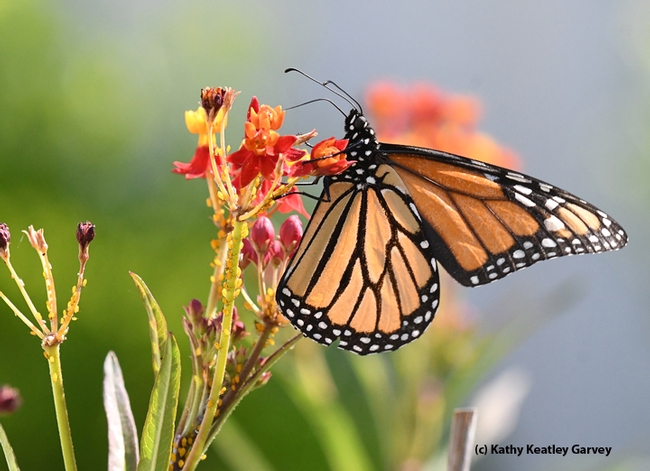
A monarch sips nectar from a tropical milkweed. (Photo by Kathy Keatley Garvey)
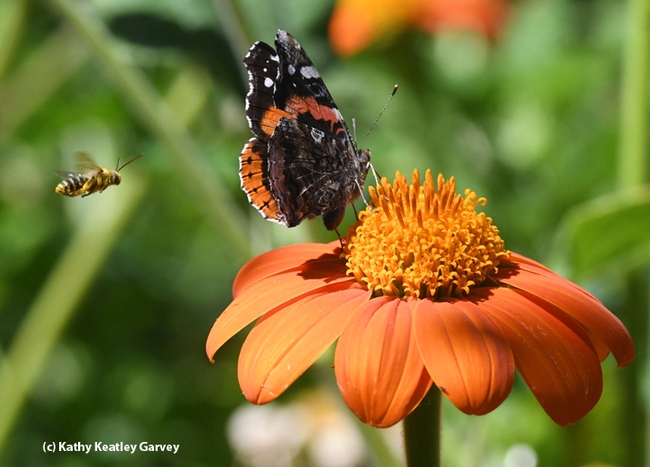
A male territorial long-horned bee targets a red admiral buttefly sipping nectar from a Mexican sunfower, Tithonia. (Photo by Kathy Keatley Garvey)
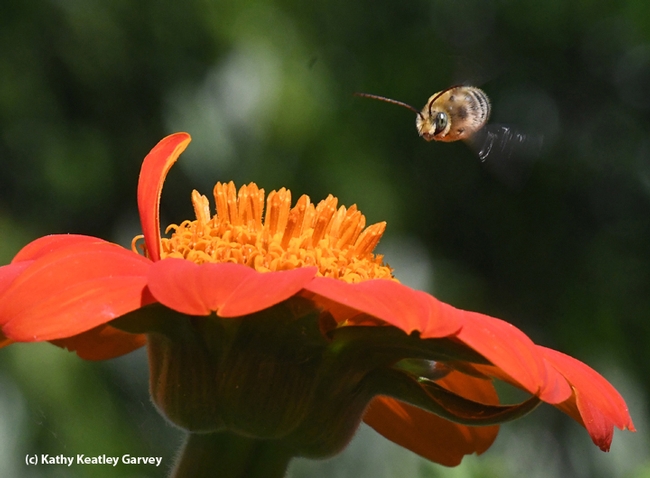
A male long-horned bee buzzes across a Mexican sunflower, Tithonia. (Photo by Kathy Keatley Garvey)


